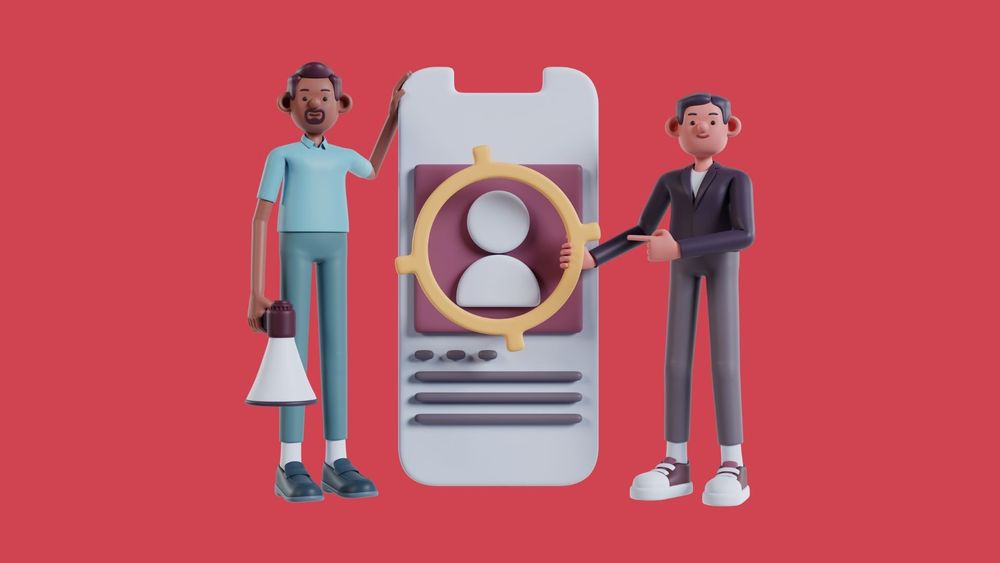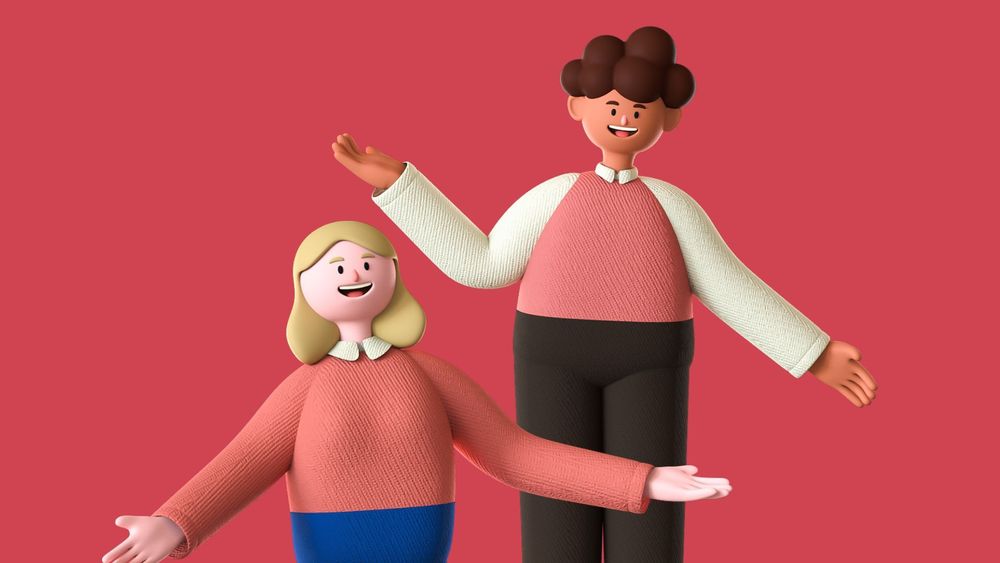In the vast and evolving field of UX design, crafting an intuitive and engaging user experience often hinges on the right questions.
Consider a scenario where a design team is tasked with revamping an e-commerce website’s checkout process. Despite extensive user research and data analysis, they might still struggle to identify a seamless solution. This is where “How Might We” questions come into play, guiding the team to pinpoint the real issues and spark innovative ideas.
By framing challenges in a way that encourages creative problem-solving, “How Might We” questions become invaluable tools. In this article, we will delve into the concept and provide a collection of 50 right questions to guide your next project and ensure that no creative ideas are discarded.
What Are "How Might We" Questions?
“How Might We” (HMW) questions are a tool used in design thinking to spark creative problem-solving. They reframe challenges into actionable questions, helping you explore solutions in a user-centered way. A properly framed HMW question does not suggest a particular solution but provides an ideal framework for innovative thinking and open-ended exploration. The “How” element invites brainstorming and the freedom to explore multiple avenues, while the “Might We” encourages optimism and a growth mindset.
In essence, HMW questions enable you to approach complex problems with curiosity and possibility, rather than feeling overwhelmed by them. They also foster collaboration within a team, as everyone can contribute their own perspectives and ideas.
The following are some characteristics of effective HMW questions:
Open-ended: Instead of posing a closed-ended question with a definitive answer, HMW questions encourage open-mindedness and exploration.
User-centered: Keeping the user in mind allows for empathy-driven solutions that address their needs effectively.
Actionable: The language used should focus on actionable steps rather than vague concepts or theories. This helps to move the team towards tangible solutions.
Positive: The “Might We” element encourages an optimistic and can-do attitude, which is essential for tackling challenges.
Why Ask How Might We Questions?
Asking How Might We questions allows us to break free from traditional problem-solving methods that tend to focus on finding one “correct” answer. Instead, it encourages us to approach problems with an optimistic mindset and explore multiple possibilities. By reframing challenges that pose challenges into questions, we can uncover new insights and perspectives that may have been overlooked.
HMW questions also promote collaboration and diverse thinking within a team. By involving different perspectives, experiences, and skill sets, HMW questions help to generate a wider range of ideas and solutions.
50 How Might We Examples to Get You Started
Focusing on User Needs and Pain Points
Identifying these challenges often begins with insight statements that highlight problem areas and user pain points.
How might we make onboarding for new users delightful and informative?
How might we simplify complex tasks within the interface to avoid user frustration?
How might we personalize the user experience to cater to individual preferences?
How might we improve the discoverability of important features within the product?
How might we make error messages helpful and actionable for users?
Enhancing User Engagement and Retention
How might we encourage users to complete desired actions within the product?
How might we increase user engagement through gamification or rewards?
How might we design personalized recommendations to keep users coming back?
How might we build a sense of community within the product to foster user loyalty?
How might we create a seamless and enjoyable user journey across all touchpoints?
Accessibility and Inclusivity
How might we ensure our interface is accessible to users with disabilities?
How might we cater to users with different cultural backgrounds and languages?
How might we make our product inclusive for users with varying levels of technical expertise?
How might we design for cognitive diversity to ensure everyone has a positive experience?
How might we create an interface that is clear, concise, and easy to understand for all users?
Innovation and Future-Thinking
How might we leverage emerging technologies like voice assistants or AR/VR to enhance the user experience and spark innovative solutions?
How might we design for emotional intelligence within the product to better understand user needs?
How might we create a more sustainable and eco-friendly user experience?
How might we predict user needs and proactively address them through design?
How might we redefine user interactions by breaking away from conventional design patterns?
Ethical Considerations
How might we design with user privacy in mind and ensure data security?
How might we mitigate the potential for bias within the user experience?
How might we encourage responsible technology use and prevent user addiction?
How might we design for transparency and build trust with our users?
How might we integrate ethical considerations into every step of the design process?
Understanding Your Audience
How might we gain deeper insights into our target audience's needs, wants, and behaviors?
How might we identify and segment our audience for more targeted marketing campaigns?
How might we personalize marketing messages to resonate with individual audience members?
How might we understand the customer journey across different touchpoints?
How might we measure the effectiveness of our marketing efforts on audience engagement?
Content Marketing and Brand Awareness
How might we create compelling content that attracts and engages our target audience?
How might we leverage different content formats (video, social media, blogs) to reach a wider audience?
How might we build brand awareness and establish thought leadership within our industry?
How might we encourage user-generated content to amplify our marketing message?
How might we optimize our content for search engines to increase organic discovery?
Driving Conversions and Growth
How might we design a seamless conversion funnel that leads users to take action?
How might we personalize calls to action to increase conversion rates?
How might we leverage retargeting and remarketing campaigns to re-engage potential customers?
How might we use A/B testing to optimize our marketing campaigns for better performance?
How might we build brand loyalty and encourage repeat purchases from customers?
The Evolving Marketing Landscape
How might we adapt our marketing strategies to new technologies and platforms (AR/VR, the metaverse)?
How might we leverage data analytics to gain a competitive advantage in marketing?
How might we personalize the marketing experience across all customer touchpoints (omnichannel)?
How might we integrate marketing automation tools to streamline processes and improve efficiency?
How might we measure the ROI (return on investment) of our marketing efforts more effectively?
Social Responsibility and Brand Purpose
How might we develop a strong brand purpose that resonates with our customers and aligns with social values?
How might we integrate social responsibility initiatives into our marketing campaigns?
How might we promote diversity, equity, and inclusion within our marketing materials?
How might we build trust and transparency with our audience through authentic marketing practices?
How might we measure the impact of our marketing efforts on society beyond just sales?
The Power of How Might We Statements
Boosting Innovative Thinking
“HMW” statements help expand thinking and generate new ideas. Defining themes play a crucial role in this process by reframing insight statements as How Might We questions, which allows for innovative thinking and the exploration of various solutions. They inspire user-centered design and innovation by encouraging teams to look beyond obvious solutions and consider a wide range of possibilities. These open-ended questions drive collaborative brainstorming sessions, fostering an environment where creativity can thrive.
By framing challenges in a “How Might We” format, teams are prompted to explore diverse perspectives and develop more holistic and effective solutions to meet user needs. This approach is instrumental in breaking down complex problems and making them more approachable, ultimately leading to breakthrough innovations.
Avoiding Suggesting a Particular Solution
"HMW" questions are crafted to generate creative solutions by avoiding the suggestion of a particular solution within the question itself. This open-ended approach encourages a wider scope of ideation and ensures that teams remain focused on identifying and solving the right problems.
For instance, instead of asking "How might we increase our social media followers by using influencer partnerships?" a more effective HMW question would be "How might we enhance our social media engagement?" This formulation avoids bias towards a specific method, thus inviting a broader array of innovative ideas and strategies. By keeping the questions broad, teams can explore multiple pathways and uncover the most effective solutions through collaborative effort.
How to Create Effective "How Might We" Questions
Start with a Point-of-View/Problem Statement
Effective “How Might We” questions stem from a well-defined design challenge that sets the tone for the Design Thinking process.
To create an actionable problem statement, known as the Point of View (POV), it is essential to anchor the challenge in user insights and needs. Insights suggest that a strong POV should articulate the fundamental problem, the specific user it’s addressing, and the profound need to be fulfilled.
For instance, “Young urban professionals need an intuitive and efficient meal planning app because their busy schedules leave little time for cooking.” This POV is actionable, specific, and focused on a genuine user need, providing a clear direction for brainstorming and innovation.
Crafting such a problem statement ensures that all subsequent ideation and design efforts remain user-centered and aligned with the core challenge.
Break Down the POV/Problem Statement
To foster a more comprehensive approach to solving the problem, it’s beneficial to break down the POV into smaller, actionable questions. This breakdown allows teams to address specific aspects of the problem and encourages a variety of solutions. Breaking down the POV can be a tricky process but is essential for focused brainstorming.
For the POV, “Young urban professionals need an intuitive and efficient meal planning app because their busy schedules leave little time for cooking,” some potential breakdown questions could be:
How might we create a user-friendly interface for the meal planning app?
How might we incorporate quick and easy recipes into the app?
How might we integrate grocery delivery services into the app to save time?
By breaking down the problem, teams can focus on one aspect at a time, making it easier to generate ideas and develop solutions.
Use Open-ended Language
Using open-ended language in problem statements and brainstorming sessions can significantly enhance creativity and ideation. Instead of framing questions and statements in a way that implies a limited set of answers, open-ended language encourages broader thinking and exploration of a range of possibilities.
This approach allows team members to think beyond conventional solutions and consider innovative alternatives, ultimately fostering a more dynamic, inclusive, and productive problem-solving environment.
Explore Wild Ideas and Possibilities
In the ideation phase, it’s essential to encourage and welcome wild ideas and possibilities. These seemingly out-of-the-box ideas may seem far-fetched at first but can spark creativity and lead to unique solutions. The HMW process is crucial in facilitating the exploration of wild ideas.
Teams should not dismiss these ideas right away; instead, they should take the time to explore them further and see if there is potential for adaptation or combination with other ideas.
By allowing for wild and unconventional thinking, teams can break free from traditional constraints and develop truly innovative solutions that address the core challenge in unexpected ways. Overall, embracing a mindset of open-mindedness and exploration during ideation can lead to more effective problem-solving efforts.
Phrase HMW Questions Positively
Phrasing HMW questions positively can significantly impact the creative process, generating more ideas and encouraging a constructive approach to problem-solving.
By using positive action verbs like 'increase,' 'create,' 'enhance,' and 'promote,' we can frame challenges in a way that motivates teams to think expansively.
For instance, instead of asking, "How might we prevent customer dissatisfaction?" we can rephrase it to, "How might we increase customer satisfaction?" This subtle shift transforms the question from a negative problem to an opportunity for positive improvement.
Similarly, instead of "How might we reduce errors in the process?" consider, "How might we enhance accuracy in the process?" These positive framings inspire innovation, focusing on potential growth and improvement rather than simply mitigating issues.
The Importance of a Good Point-of-View
A Human-Centred Approach
A good POV should be specific, focused, and actionable. It should clearly articulate the user's needs and insights gathered from research without delving into potential solutions or methods for addressing these needs. A user-centered POV captures the essence of the user's challenge, ensuring that the team remains focused on the core problem without prematurely jumping to conclusions or fixes.
For example, instead of saying, "Our users need an app that sends reminders," we might state, "Our users need to remember critical deadlines and events in their busy schedules." This approach keeps the focus on understanding the user's experience and leaves room for various innovative solutions to emerge.
Making Your Problem Statement Human-Centred
A human-centered problem statement is pivotal in a Design Thinking project. It serves as a guiding beacon that ensures the design team remains anchored to the real needs and experiences of the users. A good problem statement should be human-centered, broad enough to allow creative freedom, and narrow enough to keep the scope manageable.
For instance, rather than focusing on a technological solution like "How might we develop an app to track fitness?", a more human-centric and open-ended approach would be "How might we help individuals stay motivated to achieve their fitness goals?". This way, the problem statement encapsulates the user's emotional and practical needs, opening doors for a variety of innovative solutions while retaining a clear focus on the user's core challenge.
Conclusion
A well-crafted problem statement is the foundation of any successful design thinking project. By keeping it human-centered and open-ended, you can ensure that your team remains focused on understanding the user's needs and experiences while also allowing room for creative solutions to emerge. We hope the examples and guidelines provided in this document will help you craft effective problem statements for your next design thinking project.




